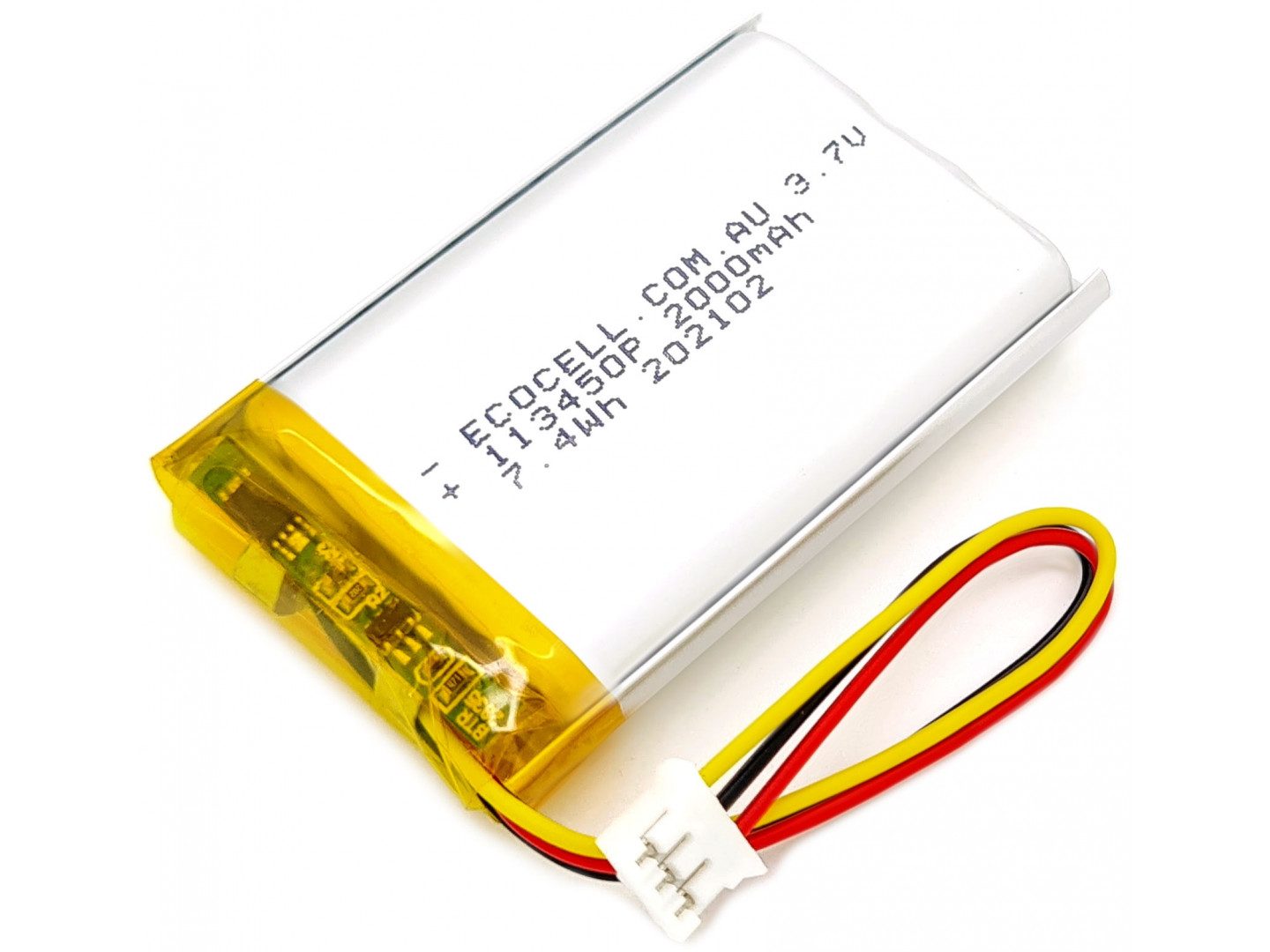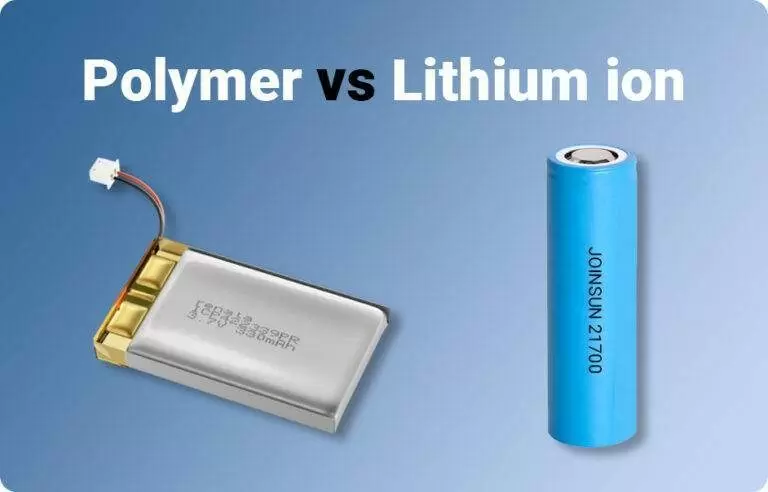-
29 W. Pawnee, Bloomfield, NJ 07003
Lithium-ion vs. Lithium Polymer Batteries: Which is Better?
For engineers and product developers designing modern electronics, selecting the right battery technology is critical. Lithium-ion (Li-ion) and lithium-polymer (LiPo) batteries dominate the market, but their differences in energy density, safety, and application flexibility are often misunderstood. As a global leader in custom battery solutions, Vade Battery leverages decades of expertise to demystify these technologies and help businesses make informed decisions.
What Is a Lithium-ion Battery?
Lithium-ion batteries operate through the reversible movement of lithium ions between a graphite anode and a metal oxide cathode, using a liquid electrolyte to facilitate ion transfer. This chemistry has powered everything from smartphones to electric vehicles since its commercialization in 1991.

Technical Advantages of Lithium-ion Batteries
Li-ion batteries excel in energy density (150–220 Wh/kg), making them ideal for applications requiring prolonged runtime in compact spaces, such as power tools or medical devices. Their proven reliability stems from decades of refinement in charge/discharge efficiency and thermal management systems. For cost-sensitive projects, Li-ion remains the most economical choice due to mature manufacturing processes.
Vade Battery’s 18650 Li-ion cells exemplify this balance, offering high-capacity solutions for industrial equipment and renewable energy storage. Explore our Li-ion Battery Packs for customizable voltage configurations.
What Is a Lithium-Polymer Battery?
Lithium-polymer batteries replace the liquid electrolyte with a solid or gel-like polymer matrix, enabling thinner, lighter designs. This innovation, introduced in the mid-1990s, allows manufacturers to create batteries in unconventional shapes—critical for wearables, drones, and ultra-slim devices.

Key Innovations in LiPo Technology
LiPo batteries achieve higher energy density (up to 265 Wh/kg) than traditional Li-ion cells while reducing weight by 15–20%. Their flexible packaging eliminates the need for rigid metal casings, enabling seamless integration into curved or irregular spaces. For example, Vade Battery’s ultra-low-temperature LiPo cells maintain performance in sub-zero environments, ideal for Arctic research equipment or aerospace applications.
Safety Comparison: Li-ion vs. LiPo
Both technologies prioritize safety, but their risk profiles differ.
Lithium-ion Safety Mechanisms
Li-ion batteries rely on advanced battery management systems (BMS) to prevent overcharging, overheating, and short circuits. While early Li-ion cells faced criticism for thermal runaway risks, modern designs—like Vade’s UN 38.3-certified batteries—incorporate flame-retardant separators and pressure relief valves to mitigate hazards.
Lithium-Polymer Stability
LiPo’s solid electrolyte inherently reduces leakage risks, and its flexible casing resists mechanical stress. However, improper charging can cause swelling—a issue addressed by Vade’s smart charging protocols and multi-layer protection circuits. For high-vibration environments, such as robotics, our shock-resistant LiPo packs offer enhanced durability.
Key Technical Differences Between Li-ion and LiPo Batteries
While both technologies share lithium-based chemistry, their structural and operational distinctions directly impact performance across applications.

Energy Density and Weight Considerations
Li-ion batteries typically deliver 150–220 Wh/kg, making them suitable for high-capacity needs like electric vehicles (EVs) or solar storage systems. In contrast, LiPo batteries achieve up to 265 Wh/kg with thinner, lighter designs—critical for drones or AR/VR headsets where every gram matters. Vade Battery’s 18650 Li-ion cells provide robust energy storage for industrial tools, while our ultra-light LiPo packs power next-gen aerospace prototypes.
Design Flexibility and Form Factors
LiPo’s gel electrolyte enables custom shapes and sizes, such as curved batteries for smartwatches or ultra-thin profiles for foldable devices. Li-ion’s rigid cylindrical or prismatic cells, while less adaptable, offer superior mechanical stability for high-vibration environments like automotive systems. For hybrid designs, Vade’s engineers combine both technologies—like embedding flexible LiPo modules within a Li-ion framework—to optimize space and performance.
Cost Implications and Lifespan
Li-ion remains 20–30% cheaper per watt-hour due to standardized manufacturing processes. However, LiPo’s longer cycle life (500–1,000 cycles vs. Li-ion’s 300–500) reduces replacement costs in long-term deployments. For budget-conscious projects, Vade’s custom Li-ion packs balance upfront affordability with reliable output.
Choosing the Right Battery for Your Application
Consumer Electronics and Wearables
LiPo dominates smartphones and fitness trackers due to slim profiles and rapid charging. For example, Vade’s 7.4V LiPo batteries enable 30-minute fast charging in medical wearables without swelling risks, thanks to multi-stage temperature monitoring.
Electric Vehicles and Heavy Machinery
Li-ion’s higher voltage stability under load (e.g., 48V or 72V systems) makes it ideal for EVs. Vade’s EV-grade Li-ion packs integrate crash-resistant casings and modular BMS for scalable energy storage, ensuring compliance with UN 38.3 and IEC 62133 standards.
Industrial and Extreme Environment Use Cases
In sub-zero temperatures or high-humidity settings, Vade’s ultra-low-temperature LiPo batteries maintain 85% capacity at -40°C, while our ruggedized Li-ion packs with IP67 ratings power offshore drilling sensors.
Future-Proofing Your Power Solution with Vade Battery
Customization and Advanced BMS Integration
Vade’s proprietary BMS technology dynamically adjusts charging rates, cell balancing, and fault detection across 20+ parameters. For IoT devices, we embed self-healing circuits that isolate damaged cells without interrupting operation.
Compliance with Global Safety Standards
All Vade batteries undergo 152-point quality checks, including nail penetration tests and altitude simulation. Our UN 38.3-certified solutions streamline logistics for international shipments, while CE/RoHS certifications ensure environmental compliance.
Conclusion: Partnering with Vade for Optimal Battery Performance
Selecting between Li-ion and LiPo hinges on your project’s priorities:
- Choose Li-ion for cost efficiency, high-load stability, and proven reliability in industrial applications.
- Opt for LiPo when lightweight, flexible designs and fast charging are non-negotiable.
At Vade Battery, we bridge this divide through tailored hybrid solutions. Our engineers collaborate closely with clients to optimize cell chemistry, packaging, and thermal management—ensuring compliance without compromising innovation.
Ready to power your next project? Submit a custom battery request or explore our technical guide to battery voltage configurations.

